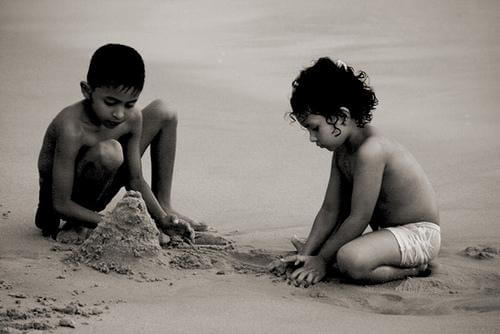Modern life, where both parents work, has profoundly changed family life, among these changes, children have often been busy with a large number of extracurricular activities, a consequence of this is that children play with less and less freedom and that they play, over time. in the early years, it is a fundamental element of their learning and, therefore, their development.
Through games, children know each other and their relationship to their environment, the game offers them a stress-free environment, at their own pace, in which they can practice their new skills and take risks, express themselves and explore creativity, independence. , curiosity and problem solving.
- This is how children acquire their sense of the world through meaningful interaction.
- For a child.
- The game is about overcoming challenges.
- Having fun and learning new ways to get things done.
- From an adult perspective.
- It is also a way to develop and develop.
- Practice skills that will be needed in the future.
- Such as social behaviors.
- Motor activities.
- And cognitive skills.
We can recognize a child involved in a game when paying more attention to the process than to the product of the game itself. What does that mean? For example, when a child sits down and simply destroys a very elaborate sand castle that had just ended, this is because the construction of the sand castle itself has a much higher value than the finished product.
Consider the following fact: the game is a unique situation for the child, in which he is allowed to enjoy his own moment, a space in which he can exercise some control over the activity he performs, which is not the case in most cases. moments in his life, when he is controlled by adults.
Children devote a lot of concentration and attention to their games. During these concentration processes in their game, the child becomes relatively oblivious to external structures.
Many health professionals, such as occupational therapists, psychomotorists, educators and psychologists, use the game as a therapeutic tool in their work with children.
It is important to stop to think about what we want for our children and stop overprotecting or encouraging them with excessive amounts of activities.
It doesn’t matter that they are the most prepared, that they speak several languages, that they are little leaders and that they play chess at a competitive level. Why don’t we allow children to be children? Through play they will increase their curiosity and, most importantly, will be able to discover and strengthen their particular talents.
It is essential to allow children to play with other children whenever possible. Of course, television and video games do not encourage the development of imagination; these are passive games. When you play outdoors, outdoors and with your friends, there are no limits to your imagination. Children who enjoy a space of freedom create their games, define their own dynamics, and also set rules by consensus with their peers.
If you want your little ones’ creativity and imagination to stay active, give them as many opportunities to play freely as possible. As for toys, offer your children those that are simpler, where everything is not solved and finished, so that in order to play the little ones can and should repeat, contribute, place, exchange, create, invent, remove, imagine?
Finally, it is the child who leads the game and the toy being just a tool.
Image courtesy of Dhammika Heenpella

